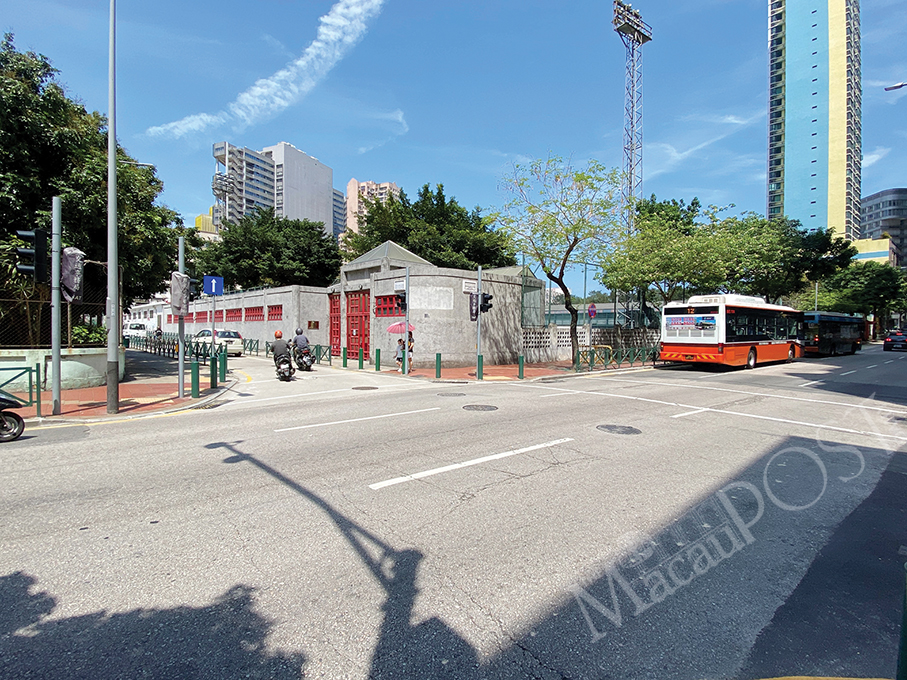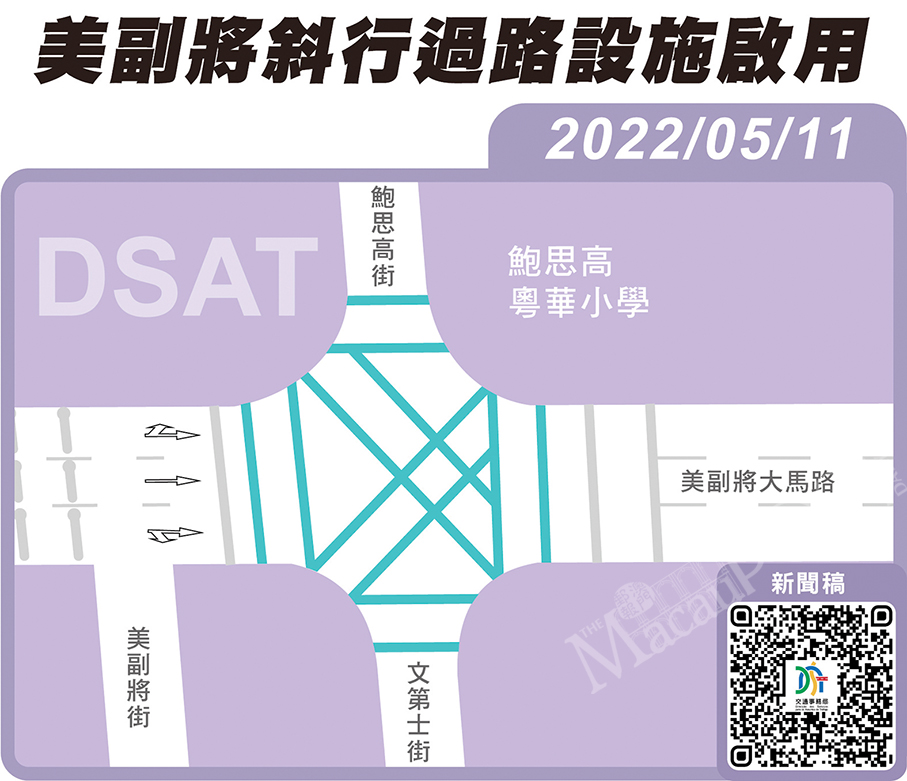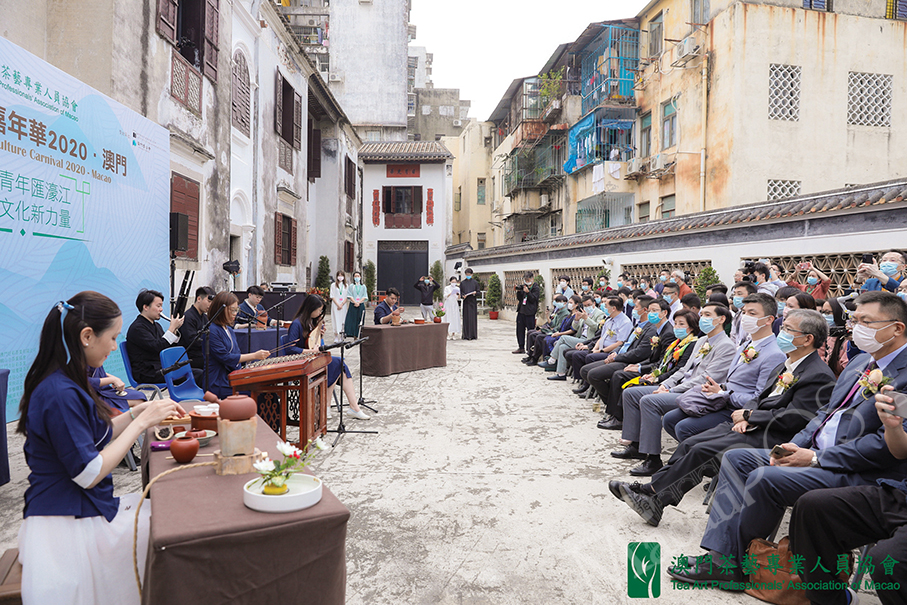A pedestrian scramble (aka diagonal crossing) comes into use today at the junction where the busy Avenida do Coronel Mesquita (美副將大馬路) meets Rua de São João Bosco (鮑思高街), i.e., outside Dom Bosco (Yuet Wah) College (鮑思高粵華小學).
A statement by the Transport Bureau (DSAT) last week said that the government had decided to set up a pedestrian scramble at the junction after assessing the thoroughfare’s traffic situation and listening to opinions from schools in the neighbourhood.
According to Wikipedia, a pedestrian scramble, also known as X crossing, is a type of traffic signal movement that temporarily stops all vehicular traffic, thereby allowing pedestrians to cross a junction in every direction, including diagonally, at the same time.
Vehicles on the one-way Avenida do Coronel Mesquita can either turn left into Rua de São João Bosco (a one-way street) or turn right into Rua de Silva Mendes (文第士街) (also a one-way street) at the junction – which is used by a large number of schoolchildren.
The statement said that the new pedestrian scramble aims to make it more convenient for pedestrians, including schoolchildren, to cross the junction.
Before today, the traffic light-controlled crossings at the junction were traditional straight crossings.
The statement said that the new diagonal crossing at the junction will come into use once the respective road markings have been painted this morning.
The pedestrian scramble on Avenida do Coronel Mesquita which comes into use today is Macau’s second one of its kind. The city’s first diagonal crossing came into use in November last year at the junction where Rua da Serenidade (永定街) and Rua da Tribuna (看台街) meets, a neighbourhood near the Barrier Gate border checkpoint.
Last week’s statement said that the operation of the pedestrian scramble near the Barrier Gate checkpoint has achieved “satisfactory” results since it started operating in November last year.
The statement underlined that compared to traditional straight crossings, diagonal crossings enable pedestrians to cross the respective junctions in a shorter time, and allows extra spaces for them to cross there.
While globally pedestrian scrambles are used in a number of advanced countries and regions, they are particularly common in major cities in Japan.

This undated handout photo provided by the Transport Bureau (DSAT) last week shows the junction where Avenida do Coronel Mesquita meets Rua de São João Bosco.

This diagram in the Chinese language released by the Transport Bureau last week shows the new pedestrian scramble, which comes into use today.






